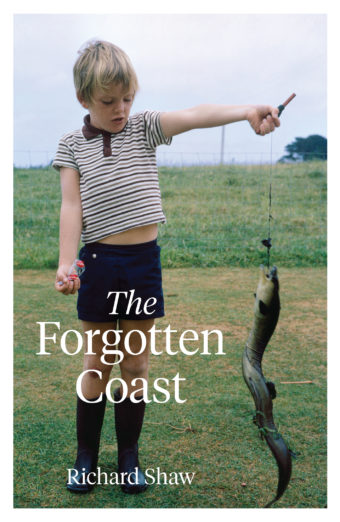Family histories are having a moment in the sun. Charlotte Grimshaw’s The Mirror Book gave us an account of a privileged mid–late twentieth century childhood amidst perceived neglect. Alexander McKinnon’s Come Back to Mona Vale records three generations of a wealthy Christchurch family and the damage done along the way. Both books are exquisitely written and told from expansive yet intimate viewpoints.
Richard Shaw takes a two-pronged approach to his account of another Pākehā family, this time in the Taranaki. First to arrive was Andrew Gilhooly, a farmer from County Limerick, Ireland, in 1874. He was tall for the era, almost six foot, and strongly built. The mostly Anglo Protestant officialdom had difficulty with his name, and Shaw’s attempts to trace the patriarch’s movements are occasionally made difficult by erroneous spelling. However, it seems certain that Gilhooly became part of the Armed Constabulary that helped build the military road between Okato and Opunake, a road that later enabled the invasion and sacking of Parihaka in 1881. The early part of the book details the appalling treatment of Māori in the Taranaki, not only the brute violence meted out by the colonial government, but also the convoluted red tape that bound their land into long, forever renewable leases.
He writes too of leading Māori of the time, Te Whiti, Tohu and Titokowaru, all of whom endured imprisonment, the rape of their women and the loss of their homes, farms and communities. All Pākehā, especially those of us whose families arrived that long ago, cannot read of Parihaka without nauseating guilt and remorse. Shaw feels particularly burdened by it, since he can track back to an ancestor who was actually involved. After the land grab, Gilhooly ended up in possession of a substantial farm and other blocks of land in the Taranaki, which set his family up for generations.
Shaw’s evocation of this shameful chapter in our history is clear-eyed. There are statements that suggest he has an overseas readership in mind, or perhaps an ignorant one. Why else mention, for example, that the Māori Land Court was not actually Māori, or to debate the difference between ‘settling and stealing’?
The second prong of the book is Shaw’s meditations on his father and Uncle Dick. Of his father he writes that he had a ‘language built on silences’, and later that he, ‘… offered me a particular way of being a man.’ The man Shaw shows us was not made terse or unkind by his silences. Bob, whose real name was Keith, was a beloved father. His own childhood was hard, his mother dying early, and Bob and his siblings deposited in an orphanage, the Methodist Home in Masterton.
Uncle Dick was a scholarly, intelligent man who trained as a priest, becoming a Doctor of Divinity in the early 1930’s at the tender age of twenty-two. He went to Rome to achieve this, and Shaw writes a little too exhaustively of the process.
Chiming throughout these accounts are nostalgic notes of the lost community networks in Taranaki, those that spun around farming families — the dances, competitions, parades — and those that emanated from the Church. There is the sense that Shaw mourns the passing of these close-knit communities almost as much as he mourns his ancestor’s part in the pillaging of Parihaka. Almost in passing, he remarks on the changes in the New Zealand priesthood — no longer do they come from Ireland, but Sri Lanka, India and the Philippines. There is also a degree of reluctant nostalgia, for this reviewer at least, that in neither environment — the orphanage or the Church — are there details of the child abuse we have latterly come to closely associate with those institutions.
One of the delights of The Forgotten Coast is the reference to writers here and abroad. Ursula Le Guin, Tom Stoppard, Owen Marshall, W.H. Auden, Aldous Harding, Tim Winton, Cormac McCarthy, Emma Espiner, Hilary Mantel and Dick Scott, among others, are mentioned in context. However, the writer who is heralded more than any other is Rachel Buchanan, and, in particular, her seminal The Parihaka Album: Lest We Forget. Shaw owns that her book was enormously influential, and that he is grateful also for the guidance he received from Māori friends and colleagues.
Towards the end of his life Shaw’s father, Bob, wrote a two-hundred page family memoir that perhaps assisted and supported Shaw during the two years it took him to write The Forgotten Coast. Bob’s memoir could be treasured by his descendants, whereas Shaw’s book may offend some of them, especially those who prefer to remain in what Buchanan dubs the ‘dementia wing’, i.e. a state of amnesia with regard to Parihaka. It is likely though that most will enjoy the book, especially the more recent material about their clever priest. A broader readership may find much of the family detail tedious.
Ultimately, no cure is offered for the ongoing white guilt that plagues many thinking New Zealanders. The bald fact is that Parihaka happened, and that we must go on wrestling not only with the historical fact, but also its legacy.
This review was originally published on the Academy of NZ Literature site.



